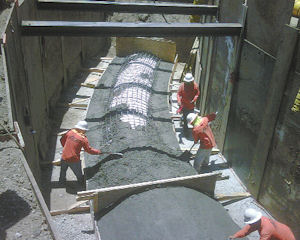The Valley Industry and Commerce Association (VICA) seldom has the opportunity to commend the City of Los Angeles for operating in an efficient and effective manner. Far too often we have pointed out that the city is wasting money through poor fiscal management, lack of oversight or simply failing to capitalize on uncollected debt. In fact, we have dedicated column after column to outrageous examples of ineffective city operations. This is why, when a city department finally got it right, VICA had to jump on board and support a practical and thoughtful plan to restore and repair the city’s sewer system. The Bureau of Sanitation’s 10-Year Financial Plan for L.A. Wastewater Infrastructure proactively undertakes the daunting task of ensuring the city maintains a safe and healthy sewer system. We all remember the devastating damage that was caused when aging water pipes began erupting across the city. Now just imagine if that was not water flooding our neighborhoods, but gallons of raw sewage. That is a sight (and smell) that should be avoided at all costs. The 10-Year Financial Plan for L.A. Wastewater Infrastructure is the way to prevent such a catastrophe. The average lifespan of a sewer line is about 80 years. Within Los Angeles’s 6,700 miles of sewers, about 20 percent of the lines are octogenarians or beyond. Additionally, 50 percent are more than 70 years old, meaning they will be due for repairs within the next decade. Currently, the Bureau of Sanitation has 50 projects underway to repair aging sewer lines and build new ones. The department’s proactive approach to managing the city’s sewers has resulted in an 80 percent reduction in sewage spills since 2000. In order to keep up with the repairs needed to maintain city sewers, the Bureau of Sanitation must raise its rates. The current budget only allows for infrastructure replacement and repair once every 168 years, more than twice the lifetime of an average sewer line. Already a lean department, cuts are no longer an option. Staffing for the Bureau of Sanitation has been cut by 15 percent in the past three years and operating costs were slashed by $27 million over the last two years with the installation of automated systems. There is simply nothing else to cut in order to free up the additional funds that are required to keep up with construction obligations. This is why the infrastructure improvement plan includes unavoidable rate increases. Each family in Los Angeles will see their sewer rates rise about $34 per year for each of the next 10 years, just slightly under $3 per month. If approved, the proposed rate increases will go into effect January 1, 2012. This is a small investment now that will prevent far costlier repairs and dangerous public health risks in the future. As business people, we all understand the need to make smart investments that will prevent additional costs down the road. Keeping up with the maintenance of our sewer system is in the best interest of everyone who lives, works and owns a business in Los Angeles. The Bureau of Sanitation is acting responsibly by taking the necessary measures to get ahead of potential problems. The business community should reward those efforts by getting behind the smart and essential 10-Year Financial Plan for L.A. Wastewater Infrastructure. Do you think sewer repairs are important enough to merit the rate increases? Email your responses or thoughts about the column to [email protected].
